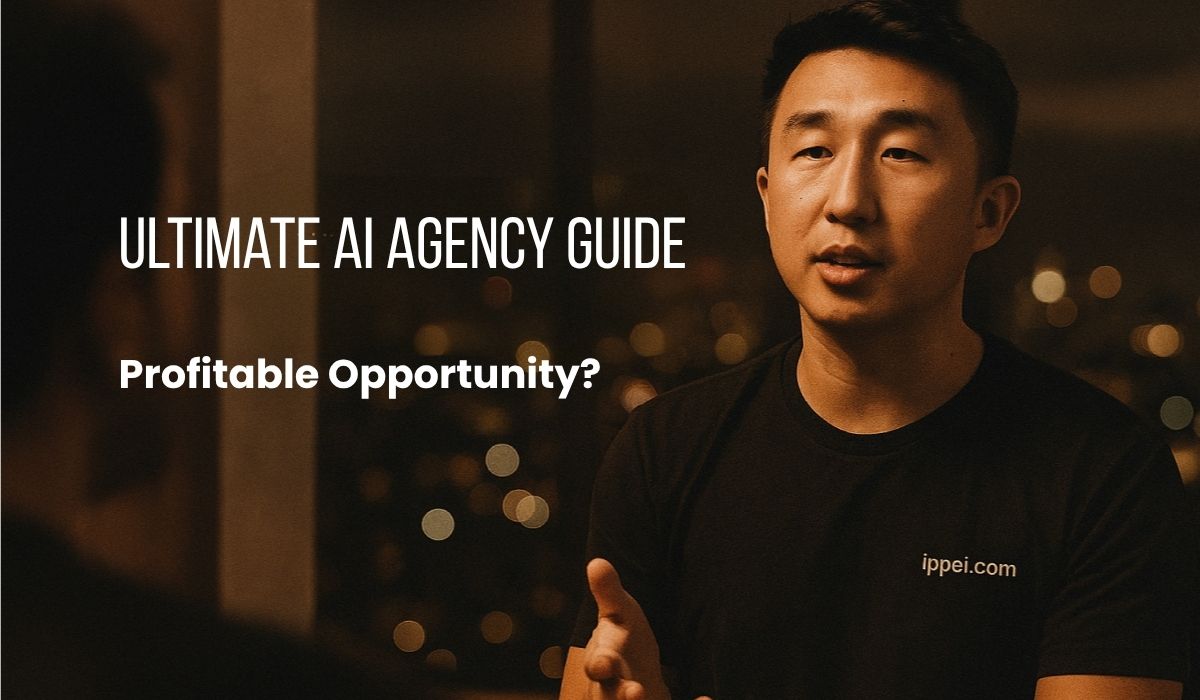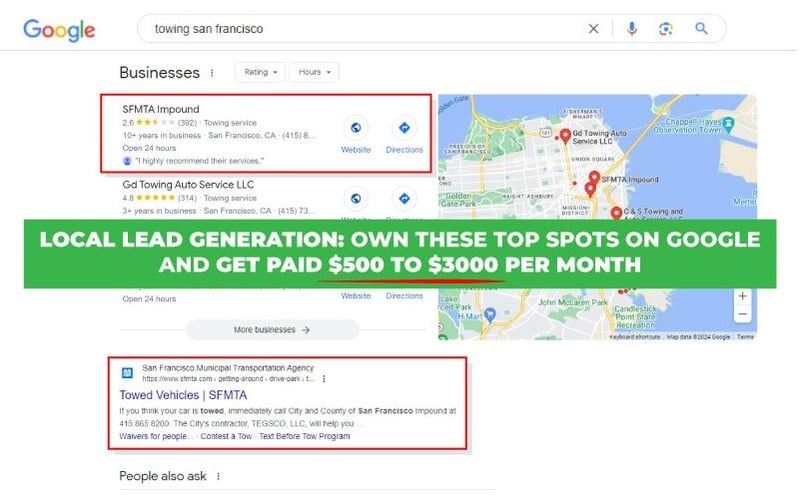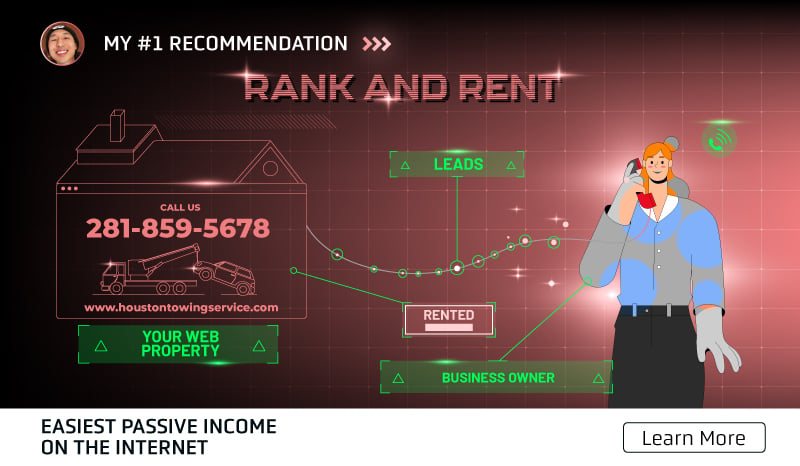The Ultimate AI Agency Guide: Profitable Opportunity in 2026? Alternative Models Explored
Updated On

An AI agency builds and sells productized automation systems that replace business processes, unlike traditional agencies that sell manual labor. An AI agency doesn’t just use AI tools like ChatGPT to write ad copy faster. A true AI agency builds and sells automated systems that replace or augment a company’s core business processes. For example, you are not managing their social media, but building an AI-powered system that automates their customer service inquiries or lead qualification process.
This article offers the ultimate AI agency guide that explains what a real AI agency is, what it offers, and how it differs from traditional marketing agencies. It breaks down key pros and cons, shares stats like market size, growth, failure rates, and margins. The article also explains why most AI agencies fail, such as unrealistic client expectations, integration problems, and custom one-off builds, then provides a 4-step plan to succeed. Finally, it concludes by comparing the AI agency model to simpler and more predictable alternatives like local lead generation.
How Is an AI Agency Different From a Marketing Agency?
Unlike marketing agencies that manage branding tasks, AI agencies deliver scalable AI-powered systems that automate client operations. The main difference is that you are selling a productized service, which is a repeatable, automated system, instead of selling ongoing human labor, which is the model of a traditional marketing agency.
How to Start an AI Agency?
Building a successful AI agency requires a disciplined strategic approach. While most new agencies fail by offering vague “AI consulting,” you can succeed by following a clear, product-focused path.
Step 1: Hyper-Specialize in One Industry and One Problem
This is the most critical step. Do not be a generalist. Pick one industry you understand (e.g., real estate, dentistry, law firms) and identify one specific, high-value problem that can be solved with automation. Examples include:
- For Real Estate: Automating the lead qualification process for new buyer inquiries.
- For Law Firms: Automating the creation of first-draft legal documents.
- For E-commerce: Automating customer support for common order inquiries.
Step 2: Productize Your Service
Once you have a problem to solve, turn your solution into a standardized product. Give it a clear name, a fixed price, and a defined set of deliverables. Instead of offering “AI consulting,” you offer the “Realtor Lead Qualifier 3000.” This makes your service easier to market, sell, and scale because it’s a repeatable system, not a custom, one-off project.
Step 3: Build Your Tech Stack
Choose no-code and low-code tools you will use to build your productized service. You don’t need to be a coder, but you must understand how to connect different platforms via APIs. Your stack will likely include:
- A workflow builder: Like Zapier or Make.com
- An AI model: Like OpenAI’s GPT-4 for text or ElevenLabs for voice.
- A database/CRM: Like Airtable or HubSpot to manage data.
- A front-end/interface: Like a chatbot from Voiceflow or a custom web portal.
Master a small, reliable set of tools rather than chasing every new AI app.
Step 4: Create a Paid Pilot Project Offer
Don’t try to sell a $20,000 project from a cold start. Lower the risk for your clients by offering a small paid pilot project for a fixed fee ($1,500 to $3,000). The goal of the pilot is to prove the value of your solution on a small scale. A successful pilot is the easiest and most effective way to upsell a client into a larger, long-term contract.
Step 5: Master Client Education and Sales
Your sales process should be 80% education. Create detailed case studies, live demos, and clear documentation that set realistic expectations. Show potential clients exactly how your system works and what results they can expect. It is always better to under-promise and over-deliver. This builds trust and filters out clients who are looking for “magic AI.”
Step 6: Deliver, Refine, and Scale
Deliver your productized service efficiently. Your delivery should be smooth if you’ve standardized your process, . Use the feedback from your initial clients to refine your product and your process. Once you have a proven, repeatable system and a few strong case studies, you can scale by hiring a small team to manage sales and delivery while you focus on strategy.
What Are the Pros and Cons of an AI Agency?
Pros of an AI agency:
- Because AI is seen as cutting-edge and in high demand, you can often charge premium fees in a fast-growing market.
- Automated systems and internal AI tools let you serve more clients with a smaller team and higher profit margins.
- You build reusable assets and intellectual property that increase the agency’s long-term value instead of trading hours for value.
- Productized AI packages and long-term retainers make sales, delivery, and revenue more predictable.
- Case studies, data, and clear performance metrics from working systems make it easier to close bigger and more serious clients over time.
Cons of an AI agency:
- Competition is intense because countless new “AI agencies” and cheap SaaS tools are chasing the same type of client.
- You must keep learning and testing nonstop as tools, models, and best practices change quickly, which can be exhausting.
- A lot of effort goes into educating clients and resetting unrealistic expectations from people who think AI is instant magic.
- When an automation breaks or behaves weirdly, your agency takes the blame for lost leads, errors, or workflow problems.
- Turning messy client ideas into stable systems usually demands real technical skill, strong project management, and many hours of custom work.
- Data privacy, security, and compliance rules add extra risk and responsibility that many normal marketing agencies never deal with.
What Are the Best Tools for an AI Agency?
Tool Category | Recommended Tools |
Workflow Automation | Make.com, Zapier, n8n |
AI & Language Models | OpenAI (GPT-4), Anthropic (Claude), Google (Gemini) |
Chatbot Builders | Voiceflow, Botpress, Tidio |
No-Code/Low-Code | Bubble, Airtable, Softr |
Project Management | Trello, Asana, Notion |
What Is The State of the AI Agency Market in 2026?
The state of the AI agency market in 2026 is booming with high-profit potential but is risk-heavy. MIT reports a 95% AI project failure rate and integration complexity. The opportunity is massive, but so are the challenges. Here are the essential statistics that frame the reality of the AI agency market today.
Metric | 2025/2026 Statistic |
AI Consulting Market Size | ~$11 Billion (2025) |
Projected Growth (CAGR) | ~36% (AI as a Service) |
AI Project Failure Rate | Up to 95% (MIT study, indicating high project complexity) |
Top Reason for Failure | Mismanaging client expectations & underestimating integration effort |
Average AI Agency Profit Margin | 50-83% (highly variable) |
How Much Can an AI Agency Make?
An AI agency can earn $20K to $72K monthly per client, but real margins depend on acquisition costs, technical scope, and delivery precision. However, these figures often gloss over the high costs and complexities involved.
Here’s a sample breakdown of the potential profitability of a single project, like building a custom AI chatbot for a client:
Item | Example Cost/Revenue |
|---|---|
Project Fee (One-Time) | $15,000 |
Platform/API Costs (Monthly) | -$500 |
Developer/Labor Cost (Project) | -$4,000 |
Gross Profit | $10,500 (70% margin) |
Client Acquisition Cost (CAC) | -$2,500 |
Net Profit | $8,000 (53% margin) |
While a 53% net margin looks fantastic, this is an idealized scenario. It assumes you can find a client, perfectly scope the project, and execute it without major issues. In reality, this is rarely the case.
Why Do Most AI Agencies Fail?
Most AI agencies fail because of poor client expectation management, technical integration issues, custom-solution inefficiencies, and fragile margins. The high failure rate of AI projects isn’t just about bad code but also flawed business strategies.
Here are 5 main reasons most AI agencies never get off the ground:
- The “Magic AI” Expectation Gap: Clients have been conditioned by marketing to expect flawless, instant results. When they learn that AI requires training, iteration, and isn’t 100% perfect, their disappointment can lead to project cancellation and churn.
- Technical Complexity and Integration Hell: Agencies frequently underestimate the time and skill required to integrate their shiny AI solution with a client’s messy, outdated, and poorly documented internal systems. This is where budgets and timelines explode.
- The Scalability Illusion: The fastest way to fail is by building completely custom, one-off solutions for every client. This approach is not scalable and turns your agency into a high-stress, low-margin consulting firm.
- High Client Acquisition Costs & Churn: The sales cycle for a 5-figure AI project is long and requires a significant amount of client education. If you don’t deliver a clear and rapid ROI, the client will leave and the high cost to acquire a replacement will crush your profitability.
- Tool Dependency and Cost Creep: You are at the mercy of the pricing and terms of AI platforms that you build your agency on. Sudden API price hikes or changes to their terms of service can vaporize your profit margins overnight.
What Are the AI Agency FAQs?
- Is starting an AI agency profitable in 2026?
- Starting an AI agency in 2026 is profitable, but only if you can productize solutions, manage client expectations, and understand industry-specific problems deeply.
- Do you need to be a coder to start an AI agency?
- You don’t need to be a coder to start an AI agency. However, you have to understand APIs, AI platforms, and system integration to succeed.
- What’s the biggest mistake new AI agencies make?
- The biggest mistake new AI agencies make is building custom one-off solutions instead of scalable, productized AI services. It’s easier to close a custom deal at first, but it kills your scalability and long-term profitability.
- Is an AI agency better than a traditional marketing agency?
- An AI agency has higher profit potential than a traditional marketing agency. However, it also carries more complexity, technical risk, and delivery responsibility.
Final Verdict: Is Starting an AI Agency a Viable Path to Profitable Online Income?
Starting an AI agency is a viable path to profitable online income because AI solutions can command high fees and strong margins, but only if you can consistently deliver working systems in complex real-world environments. The model rewards those who deeply understand a niche and can productize repeatable solutions, like AI-based lead qualification or customer support automation. However, the 95% AI project failure rate and integration complexity mean most agencies underestimate timelines, budgets, and delivery challenges. For non-technical founders or beginners, this quickly becomes a high-stress, high-risk consulting grind rather than a smooth “AI gold rush.”
Is Local Lead Generation a Safer and More Predictable Choice Than an AI Agency?
Local lead generation is a safer and more predictable choice than starting an AI agency because it avoids the technical complexity, integration risk, and expectation management that make AI projects so fragile. You build a simple asset once, and it pays you for years.
Metric | AI Agency | Local Lead Generation |
Asset Ownership | Low (You build on 3rd-party APIs) | High (You own the website) |
Income Stability | Low (Project-based, high churn) | High (Predictable recurring retainers) |
Profit Margin | 30% to 50% (High technical & labor costs) | 80% to 95% (Low maintenance costs) |
Competition | Global (Everyone is an "AI expert") | Local (A few local businesses) |
Time to Profit | 9 to 18 Months | 2 to 6 Months |
Technical Risk | Very High (Integration, API changes) | Very Low (Simple websites) |
Client Management | High (Constant education, managing expectations) | Low (They just want the leads) |
Why Is Local Lead Generation the Best Business Model for Stable, High-Margin Income?
Local lead generation is the best business model for stable, high-margin income because each ranked site becomes a digital property that can earn 80% to 95% profit margins with very little ongoing effort. Once your site appears at the top of Google for a niche like “plumber in Austin” or “roof repair in Denver,” local companies will gladly pay you every month for the steady stream of leads. You’re not reliant on APIs, platform pricing, or complex technical delivery.

One of my clients is Whittier Superior Roofing, 14139 Imperial Hwy. Whittier, CA 90604, 562-245-5656, https://whittierroofer.com/. There was 1 month where 7 of my leads closed for $74,800, and I earned $3,740 from it.
If you want a business that trades complexity for control, and hype for dependable income, check out how local lead generation can become your primary path to financial freedom.

Follow Me
Ippei Kanehara
Founder/CEO
$52K per month providing lead generation services to small businesses
Ippei.com is for digital hustlers, industry leaders and online business owners.
His #1 online business recommendation in 2024, is to build your own lead generation business.
